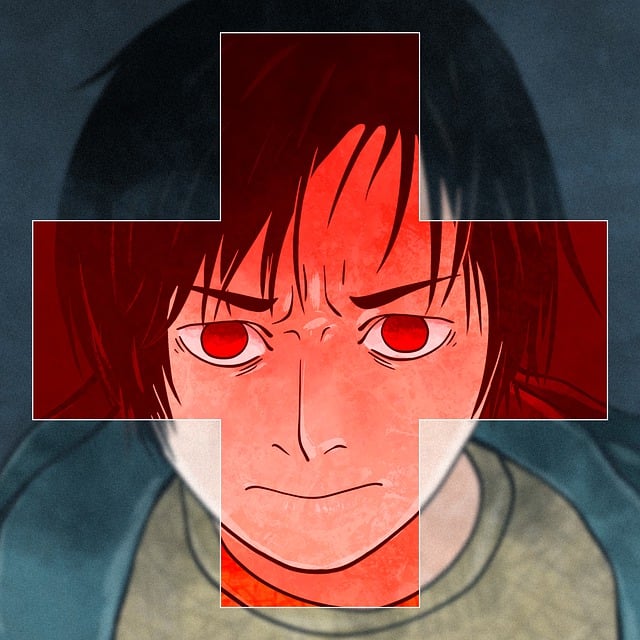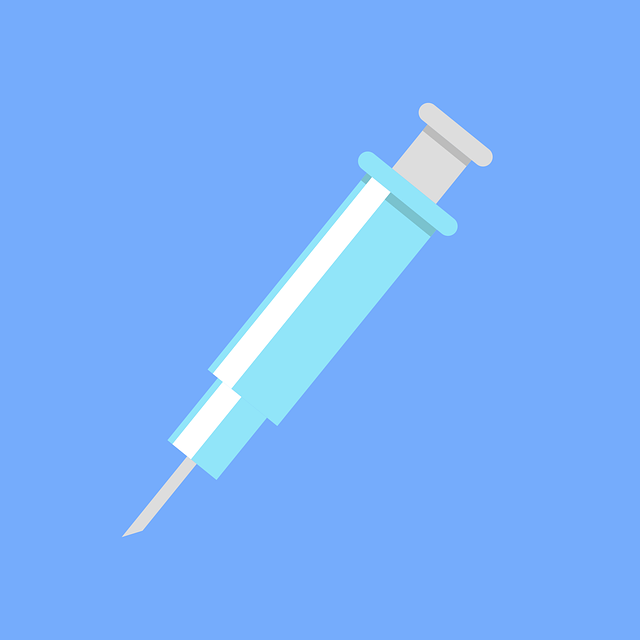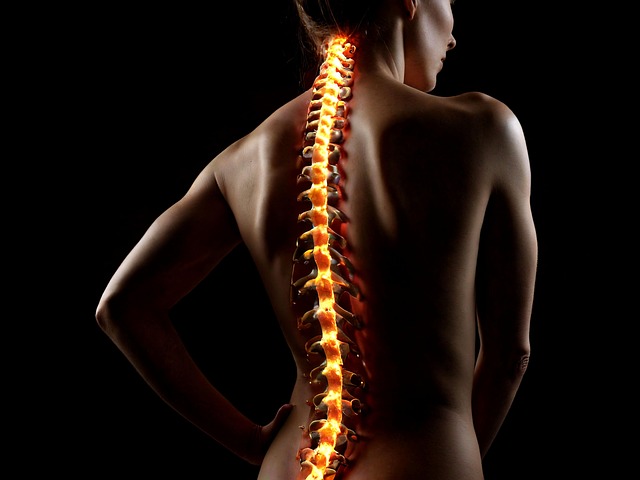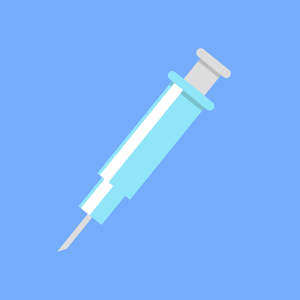Post-traumatic stress disorder (PTSD) is a long-lasting mental health condition triggered by traumatic events, characterized by flashbacks, nightmares, and anxiety. Effective treatment involves cognitive-behavioral therapy (CBT), eye movement desensitization and reprocessing (EMDR), medication, and self-care practices like exercise and mindfulness. Support groups and community resources also play crucial roles in healing. A comprehensive approach combining therapy, self-care, support networks, and healthy coping mechanisms is essential for long-term recovery from PTSD.
“Discovering Paths to Healing: A Comprehensive Guide to Professional PTSD Treatment. Post-traumatic stress disorder (PTSD) is a complex mental health condition with far-reaching effects, yet understanding and effective treatment options are accessible. This article delves into the intricate world of PTSD, exploring its causes, symptoms, and a comprehensive array of treatment strategies. From traditional therapies to evidence-based practices, medication management, self-care techniques, and community support, this guide aims to empower individuals on their journey towards healing and recovery from PTSD.”
Understanding PTSD: A Comprehensive Overview

Post-traumatic stress disorder (PTSD) is a mental health condition that can affect individuals after they’ve experienced or witnessed a traumatic event. It’s more than just feeling scared or overwhelmed; PTSD changes how a person thinks, feels, and acts, and it can last for months or even years. Symptoms often include flashbacks, nightmares, severe anxiety, and avoidance of reminders of the trauma.
Understanding PTSD involves recognizing its causes, which span from war and natural disasters to violent crimes and accidents. Professional PTSD treatment is crucial in helping individuals manage these symptoms and regain control of their lives. Through therapies like cognitive-behavioral therapy (CBT), eye movement desensitization and reprocessing (EMDR), and group therapy, patients can learn coping strategies, process traumatic memories safely, and develop a renewed sense of security and well-being. Effective PTSD treatment not only provides tools for managing symptoms but also fosters resilience, enabling individuals to rebuild their lives after trauma.
Common Symptoms and Signs of Post-Traumatic Stress Disorder

Post-Traumatic Stress Disorder (PTSD) is a complex condition that can significantly impact an individual’s daily life and well-being. Recognizing the common symptoms is an essential step in understanding this disorder and seeking appropriate PTSD treatment. Some of the most prevalent signs include intrusive memories or flashbacks, where individuals relive traumatic events as if they were happening again. These experiences can be triggered by specific cues, leading to intense emotions and physical reactions.
Another key symptom is avoidance, where people with PTSD consciously steer clear of situations, places, or people that remind them of the trauma. They may also exhibit heightened arousal and anxiety, such as having difficulty sleeping, quick temper, or feeling constantly on edge. These symptoms often interfere with daily functioning, making it crucial for those affected to reach out for professional help and explore effective PTSD treatment options.
Traditional Treatment Approaches for PTSD

In addressing Post-Traumatic Stress Disorder (PTSD), traditional treatment approaches have relied on a combination of therapies that aim to help individuals process and overcome their traumatic experiences. Cognitive Behavioral Therapy (CBT) is one such well-established method, focusing on identifying and changing negative thought patterns and behaviors associated with the trauma. This approach empowers patients to develop healthier coping mechanisms and reduce the intensity of distressing symptoms.
Another commonly used technique is Eye Movement Desensitization and Reprocessing (EMDR), which facilitates the processing of traumatic memories through bilateral stimulation, such as side-to-side eye movements or tactile taps. EMDR helps individuals reprocess these memories, reducing their emotional impact and allowing for a more adaptive response to traumatic reminders. These traditional methods have shown significant effectiveness in helping people manage and overcome PTSD symptoms, offering valuable tools for recovery.
The Role of Therapy in Healing from PTSD

Therapy plays a pivotal role in helping individuals heal from post-traumatic stress disorder (PTSD). Through specialized therapeutic approaches, such as cognitive processing therapy (CPT) or eye movement desensitization and reprocessing (EMDR), patients can safely process traumatic memories and reduce their distressing impact. These evidence-based methods enable individuals to develop healthier coping mechanisms, challenge negative beliefs formed after trauma, and regain a sense of control over their lives.
In the therapeutic journey, patients learn to manage symptoms like flashbacks, nightmares, and hypervigilance. By facing and reinterpreting traumatic memories in a safe environment, they can begin to heal and rebuild their sense of self. The supportive nature of therapy provides a crucial space for individuals to express their experiences, process emotions, and develop new strategies to navigate life after trauma, ultimately fostering resilience and improved quality of life.
Evidence-Based Therapies for Effective PTSD Management

Evidence-based therapies have proven highly effective in managing Post-Traumatic Stress Disorder (PTSD). Cognitive Processing Therapy (CPT) is one such approach, designed to help individuals challenge and reframe traumatic memories, thus reducing their distressing impact. This therapy encourages patients to confront and process the trauma, enabling them to gain a new perspective and reduce symptoms like nightmares, flashbacks, and avoidance behaviors.
Another powerful method is Eye Movement Desensitization and Reprocessing (EMDR), which facilitates the processing of traumatic memories through side-to-side eye movements or other bilateral stimulation. EMDR helps individuals rescript traumatic experiences, lessening their emotional intensity. Both CPT and EMDR have robust research backing, making them go-to options in PTSD treatment, offering hope and healing to those who have experienced trauma.
Medication Options to Complement PTSD Treatment

When it comes to professional PTSD treatment, medication can play a crucial role in complementing therapy and enhancing recovery. Antidepressant medications, such as selective serotonin reuptake inhibitors (SSRIs) or sertraline, are commonly prescribed to help manage symptoms like anxiety and depression that often accompany PTSD. These drugs work by increasing the levels of serotonin, a neurotransmitter associated with mood regulation, in the brain.
Additionally, anti-anxiety medications like benzodiazepines might be used on a short-term basis to provide rapid relief from intense panic or nightmares. However, due to the potential for dependence and side effects, these are typically prescribed cautiously and for limited periods. It’s important to note that medication alone is not a cure for PTSD; it’s most effective when combined with evidence-based therapeutic approaches like cognitive processing therapy or eye movement desensitization and reprocessing (EMDR) to address the underlying trauma and promote lasting healing.
Incorporating Self-Care and Lifestyle Changes

Incorporating self-care practices and lifestyle changes is a vital component of effective PTSD treatment. Beyond traditional therapy sessions, prioritizing personal well-being can significantly enhance recovery. This includes activities like regular exercise, mindfulness meditation, and maintaining a consistent sleep schedule—all backed by research showing their positive impact on mental health. Engaging in these practices helps individuals manage stress, reduce anxiety, and improve overall emotional regulation, which are crucial aspects of overcoming PTSD symptoms.
Lifestyle modifications such as adopting healthy eating habits, setting boundaries, and engaging in creative outlets can also be transformative. These self-care strategies empower individuals to take control of their mental health, fostering a sense of resilience and empowerment. By integrating these practices into daily routines, those seeking PTSD treatment can complement their clinical care, contributing to a holistic approach that addresses both the mind and body.
Support Groups and Community Resources for PTSD Victims

Support groups play a pivotal role in the journey towards overcoming Post-Traumatic Stress Disorder (PTSD). These groups offer a safe and non-judgmental space where individuals affected by trauma can connect, share their experiences, and gain invaluable peer support. Facilitated by trained professionals, sessions often incorporate techniques like cognitive behavioral therapy (CBT) to help members process traumatic memories and develop healthy coping strategies. The sense of community and belonging fostered within these groups empowers victims to navigate their healing journey with renewed hope and resilience.
Beyond support groups, various community resources are available to aid PTSD victims. Many organizations provide free or low-cost counseling services, crisis hotlines, and educational workshops tailored to raise awareness about PTSD and offer practical coping mechanisms. These resources not only supplement professional PTSD treatment but also promote a sense of solidarity among those dealing with the aftermath of traumatic events. By leveraging these community tools, individuals on their path to recovery can access much-needed support and find solace in knowing they are not alone in their struggle against PTSD.
Long-Term Recovery and Maintenance Strategies

Long-term recovery from PTSD involves ongoing maintenance strategies that support sustained healing. This includes regular therapy sessions, often incorporating evidence-based practices such as cognitive behavioural therapy (CBT) and eye movement desensitisation and reprocessing (EMDR). Engaging in self-care practices like mindfulness meditation, exercise, and maintaining a consistent sleep routine can also significantly enhance recovery. These strategies not only help manage symptoms but also foster resilience, enabling individuals to navigate challenges without relapsing into traumatic memories or behaviours.
Additionally, building a strong support network is crucial for long-term success in PTSD treatment. Connecting with peers who understand the struggle through support groups, and seeking guidance from mental health professionals, can provide invaluable assistance. Integrating healthy coping mechanisms, setting realistic goals, and learning to recognise early warning signs of potential setbacks are key components of maintaining stability. By adopting these strategies, individuals can cultivate a sense of agency over their recovery journey and thrive in rebuilding their lives post-trauma.
